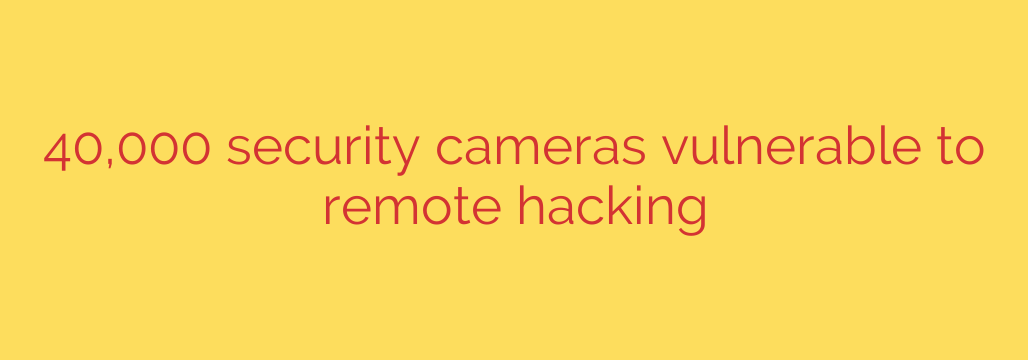
A significant number of security cameras are currently vulnerable to remote hacking, potentially exposing sensitive feeds to malicious actors. Estimates suggest around 40,000 devices globally are susceptible due to various security weaknesses, posing a major cybersecurity concern.
This widespread vulnerability means that without proper protection, these cameras could be accessed and controlled from anywhere in the world. The risks associated with this unauthorized access are substantial, ranging from simple privacy breaches where intruders can view live or recorded footage, to more sophisticated attacks. Hackers could potentially manipulate camera settings, disable recording, or even use the compromised devices as entry points into a user’s wider home or business network.
Often, these vulnerabilities stem from easily preventable issues such as leaving default passwords unchanged, using outdated firmware, or incorrectly configuring network settings that leave the camera exposed directly to the internet. The ease with which these devices can be found and exploited highlights the critical need for stronger security practices among users and manufacturers alike.
Protecting your devices is paramount. Users are urged to immediately check their camera’s configuration. Always change the default passwords to strong, unique ones. Ensure the camera’s firmware is updated to the latest version provided by the manufacturer, as updates frequently patch security flaws. Restrict network access to the camera, ideally placing it behind a firewall and accessing it only through secure, authorized channels like a VPN if remote viewing is necessary. Ignoring these steps leaves your personal or business premises open to unwanted digital surveillance and potential misuse. Implementing these essential security measures is crucial to safeguard against remote hacking threats targeting connected cameras.
Source: https://securityaffairs.com/178908/iot/40000-security-cameras-remote-hacking.html








